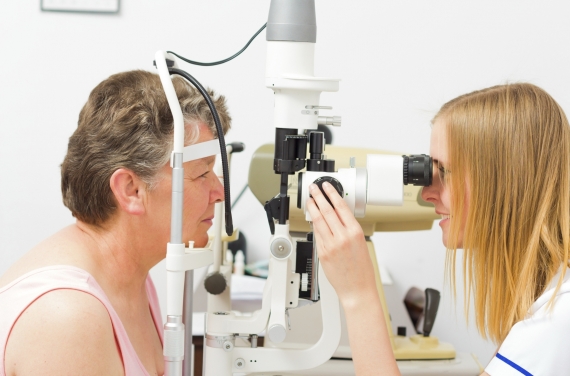Glaucoma Treatment Cape Coral
Glaucoma is often part of the aging process. If you are looking for the best glaucoma treatment in Cape Coral, Elmquist Eye Group offers early diagnosis and the latest treatments and laser and conventional surgery options.
 Elmquist Eye Group has been serving Lee County and Southwest Florida for more than 20 years. E. Trevor Elmquist, DO, and his partner, Kate Wagner, OD and associate, Nina Burt, OD, provide a wide range of eye care services, from routine eye exams for glasses to laser cataract and glaucoma surgery.
Elmquist Eye Group has been serving Lee County and Southwest Florida for more than 20 years. E. Trevor Elmquist, DO, and his partner, Kate Wagner, OD and associate, Nina Burt, OD, provide a wide range of eye care services, from routine eye exams for glasses to laser cataract and glaucoma surgery.
Dr. Elmquist is board certified by the American Board of Ophthalmology and a fellow of the American Academy of Ophthalmology. He has also been selected as one of America’s Top Doctors in ophthalmology by Castle Connolly Medical Ltd.
Glaucoma Facts
- There is no cure for glaucoma, and lost vision cannot be restored.
- Over 3 million Americans have glaucoma, and 2.7 million of them (age 40 and older) are affected by its most common form, open-angle glaucoma.
- Nearly half of the individuals who have glaucoma are not aware that they have it.
- Open-angle glaucoma typically has no symptoms, pain or warning signs.
- Closed-angle glaucoma, the rarer form of the disease, is a medical emergency. If not treated immediately, blindness can quickly result.
- Worldwide, glaucoma is the second leading cause of blindness (after cataracts), according to the World Health Organization.
- Glaucoma is 15 times more likely to cause blindness in African Americans than in Caucasians.
- The risk of glaucoma rises rapidly in Hispanics over age 60.
Getting a comprehensive dilated eye exam at Elmquist Eye Group is the most important thing you can do to detect the disease before it damages your vision. When diagnosed and treated at an early stage, glaucoma can be controlled.
Are there Different Types of Glaucoma?
Glaucoma is a disease that affects the optic nerve located at the back of the eye. Although high eye pressure sometimes leads to glaucoma, many people can also develop glaucoma with “normal” eye pressure. There are different forms of glaucoma, but these are the two most common:
Open-angle glaucoma
Open-angle glaucoma is the most common form of glaucoma. If the “open” drainage angle of the eye becomes partially blocked and is not able to drain properly, it can lead to a buildup of pressure within the eye and damage the optic nerve fibers, causing loss of vision. The damage occurs so gradually and painlessly that you will most likely not be aware of any problem until the optic nerve has already been badly damaged.
For most people, eye drops prescribed to help reduce the pressure inside your eye. Sometimes, oral medications are also prescribed. When medications are not enough to keep the intraocular pressure under control, laser surgery or surgery in the operating room may be needed to help promote proper drainage and prevent fluid and pressure from building up.
Closed-angle glaucoma
Closed-angle glaucoma, also called angle-closure glaucoma or narrow-angle glaucoma, is less common than open-angle glaucoma. It occurs when the normally open drainage angle of the eye becomes completely blocked. This can cause intraocular pressure to build up rapidly and is a true eye emergency.
Symptoms of closed-angle glaucoma include severe eye pain, blurred vision, headache, rainbow haloes around lights, nausea and vomiting. This form of glaucoma demands immediate medical attention. If not treated immediately, closed-angle glaucoma can cause permanent blindness.
If you live or work in Cape Coral and want more information about glaucoma treatment, or have already been diagnosed with the disease, call Elmquist Eye Group at (239) 936-2020 to learn about treatment options that can preserve your vision.
